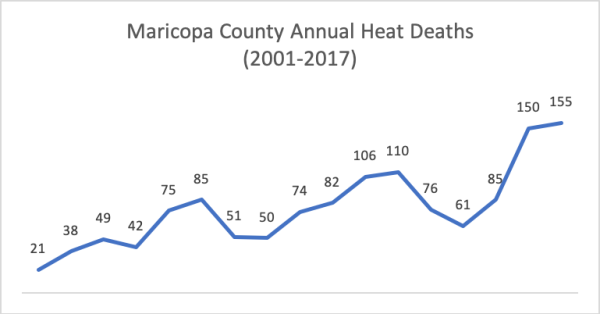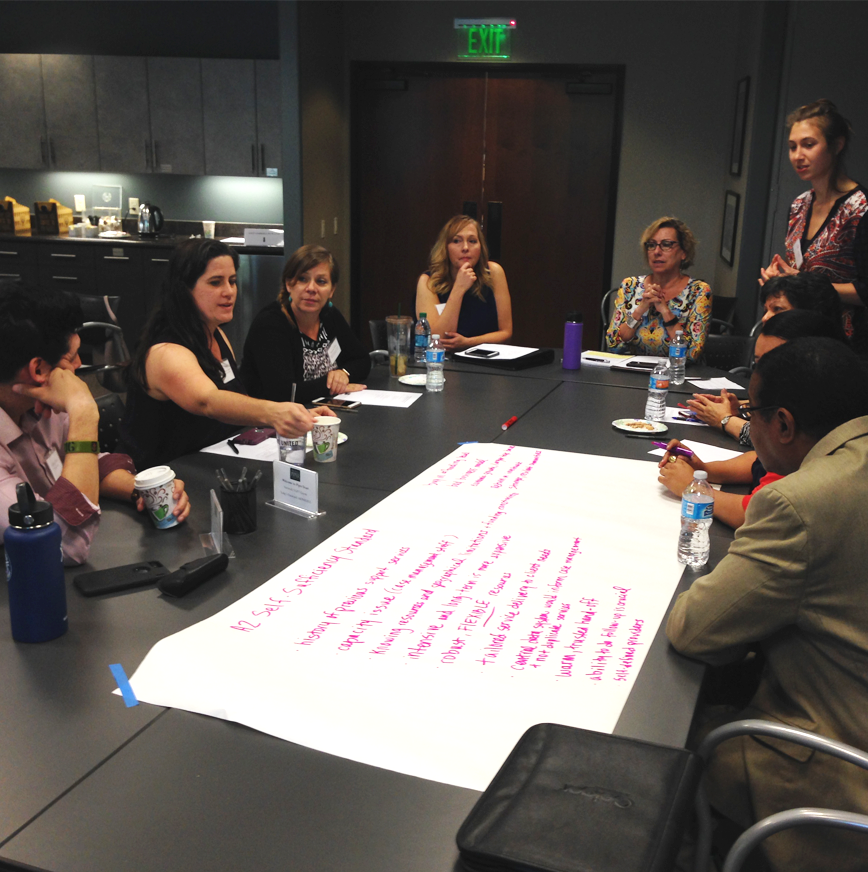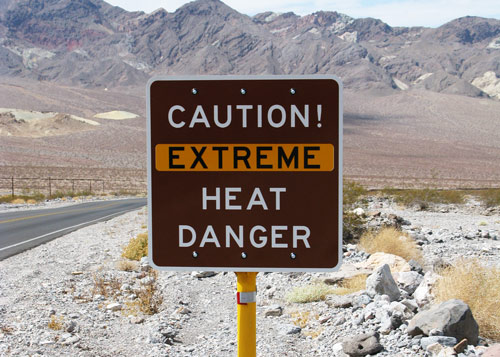Resilient Connections:
Maricopa County
Valley of the Sun
Summertime in Arizona’s Maricopa County is dangerously hot, and getting hotter every passing year due to climate change. In 2016 and 2017, heat-related deaths hit an all-time high with consecutive triple-digit numbers, and these heat-related health effects hit racial/ethnic minorities, older adults, and the economically disadvantaged disproportionately hard.
In 2015, ISC conducted a resilience assessment of Maricopa County and found a profound lack of social connectedness, which exacerbates existing vulnerabilities. On top of this, the social services sector was—and still is—strained by deepening vulnerabilities. The extreme heat exacerbates health conditions, which in-turn puts strain on a dedicated, but under-resourced, and often fragmented group of organizations with a role to play in the social services system (nonprofit, governmental, and private). Starting in 2016, ISC began to directly tackle some of these systemic hurdles to the region’s resilience.

Related Themes
Convening, Analyzing, and Contextualizing
In partnership with a local foundation, ISC brought together these organizations tasked with tackling specific regional vulnerabilities. Often these stakeholders had never met, or didn’t understand their role in the larger system serving populations within Maricopa County, so the act of convening began to address fragmentation by fostering connections. Some of these cause-centered cohorts even became formal networks.
Once convened, ISC engaged the expertise and knowledge of these stakeholders to gather data on the social service sector from funding, to intake, to delivery.
Finally, using system and geospatial mapping, ISC contextualized the cause-centered cohort’s data in new and different ways. This process allowed the social service providers to better understand service delivery, determine systemic weak points, and together, develop resilient solutions and strategies to address them. Through this process, service providers learned the utility of community resilience.
Specifically:
- Service providers learned how to use data to develop resilience-based strategies to become more cost-effective, efficient, and equitable.
- Existing regional networks were strengthened and new cause-centered networks were created – deepening the connectivity of individuals, reducing systemic fragmentation, and building social cohesion, or connectedness.
- Social cohorts were formed with a common understanding of community resilience-driven planning and increased interest in behaving and organizing as a collective system.
Success Snapshot
Utility Assistance Network
With average temps climbing due to climate change, low income residents’ inability to pay utility bills is also growing – characterizing a key community vulnerability in Maricopa County.
ISC worked with local leaders to build a network of 30 organizations from the corporate, nonprofit, and public sectors. Over the course of four community workshops, ISC facilitated discussions on barriers and challenges and analyzed opportunities for solutions. The cross-sector group of stakeholders began developing a resilience-based delivery system and solutions for those most harmed by extreme heat.
The Utility Assistance Network is now working to address heat-related health issues by implementing a newly-designed centralized intake system that streamlines access to fragmented funding sources and allows for a more holistic approach to helping assistance recipients.
Once built, this new system will mean network members are able to serve more people with the same amount of resources.







